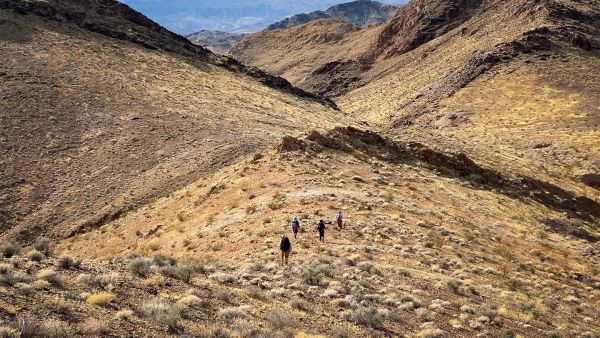Across the dry, scrubby hills of the Mojave Desert, a group of Johns Hopkins scientists and students spent three weeks this month working to understand millions of years of Earth's history. Evidence of ancient ice ages, remnants of geochemical events that disturbed prehistoric oceans, and fossils of the oldest living organisms on the planet are compressed in the strata of exposed rocks—nature's record-keepers.
"The mountains surrounding us, they may not look particularly unusual or spectacular, but they record some of the most unusual periods in Earth's history," says Emmy Smith, an assistant professor in the Department of Earth and Planetary Sciences at the Krieger School of Arts and Sciences. "Surrounding us there's hundreds of millions of years of recorded time."
Led by Smith, undergraduate students in the Geological Field Studies in California Intersession class have been on a mission to survey and map land just east of Death Valley in Shoshone, California. Rough reconnaissance maps exist of the remote wilderness area, Smith says, but the goal of the Intersession course was to characterize and catalog the geological units of the region in order to build a detailed digital topographic map, which will be assembled during a companion class Smith will teach in the spring.
"[Using this data], we could produce a new geologic map that's more detailed than what's in the published literature," Smith says. "There's the potential to make discoveries and to do research as part of this class."
Continue reading at Johns Hopkins University
Image via Johns Hopkins University


